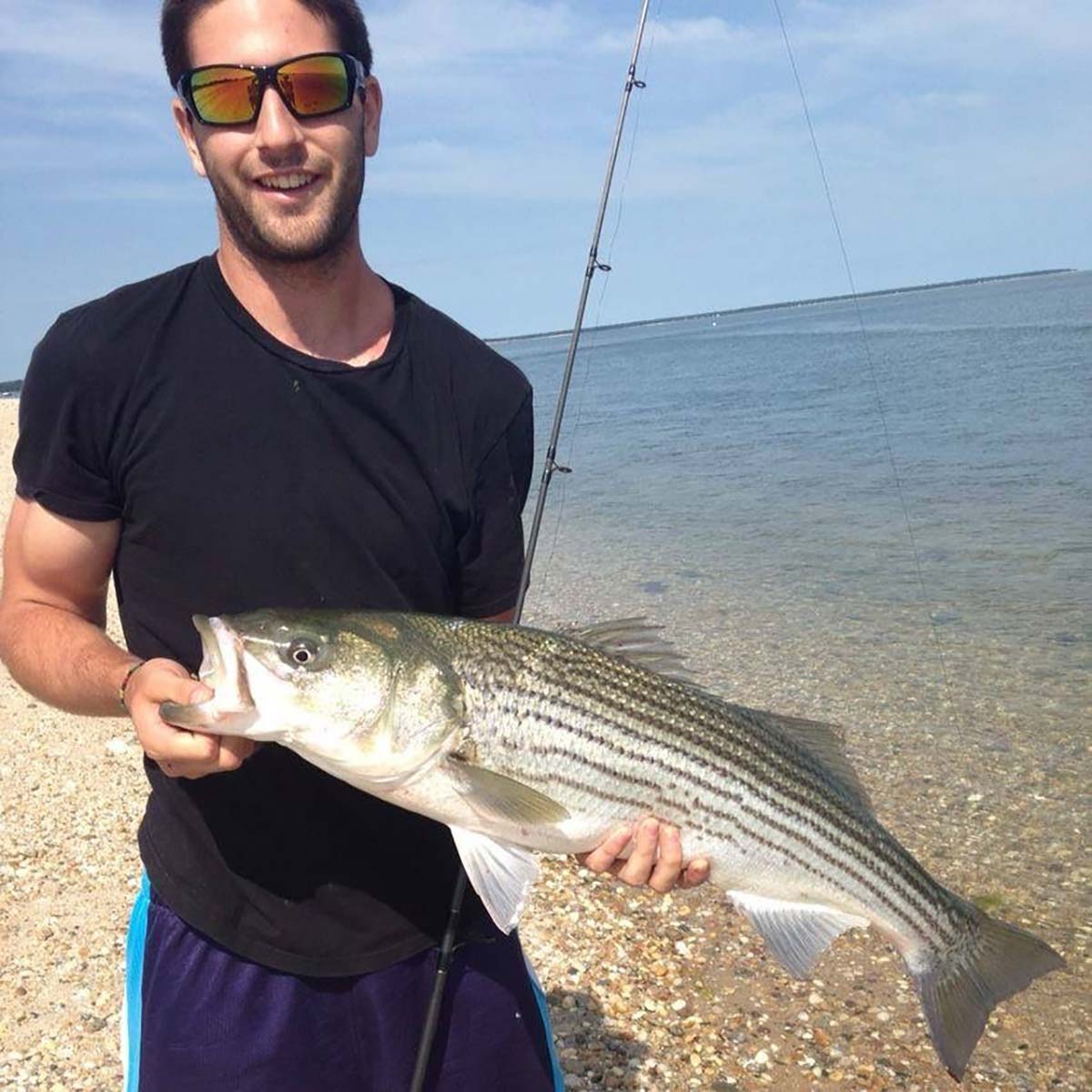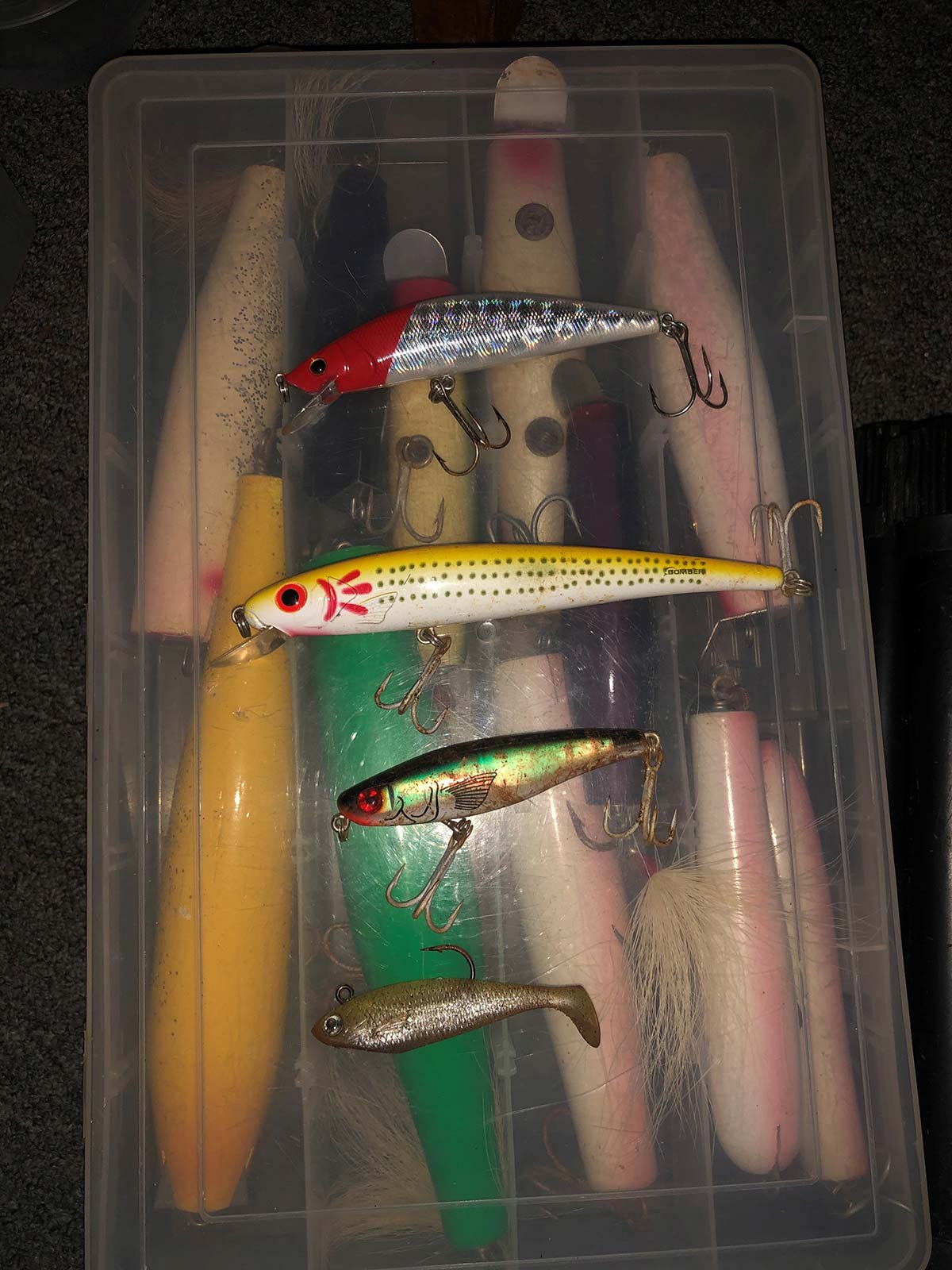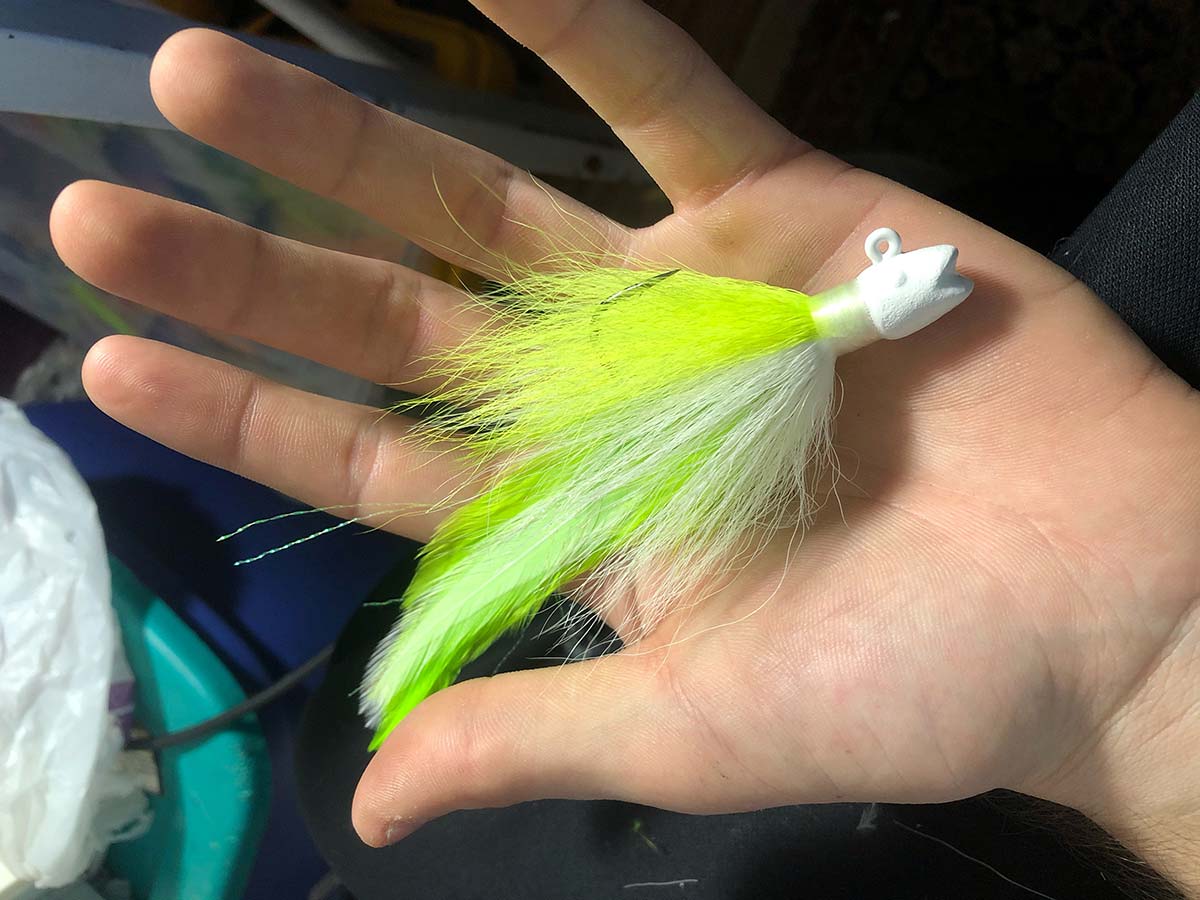
May is a fantastic month in the Montauk surf and tends to give up a very large fish or two every year.
Winter is a brutal time of year for striped bass fishermen in the Northeast. From December to April, many anglers occupy their time with the freshwater fishery here on the Island. Some keep busy tying jigs or changing hooks on their plugs in preparation for the upcoming season. When April rolls around all the preparations anglers made during the winter finally come into play. It’s a chance for casters to put to use all the things they’ve discussed with they’re fishing partners all winter long.
Many anglers will focus their efforts on the west end of the island in April, but the East End, specifically Montauk, can provide plenty of action the second half of the month. While most fish will be schoolies, there is also the occasional keeper in the mix. Montauk’s rocky shorelines are what typically draw anglers, but the open sand beaches tend to give up a majority of the action in April. Places like Hither Hills are where I typically start the spring run in Montauk. A variety of tins and ¾ to 1-ounce jigs are what fill my bag the first two weeks of the month. I normally work my lures the same as I would in the summer, with a slow steady retrieve. I don’t mean dragging the bottom, but just fast enough to keep it off. My rod of choice is a light action 9-foot rod, or at times, a 7-foot medium action, depending on the conditions. I try to use lines from 30-pound test down to 15-pound test braid to get added casting distance when throwing smaller jigs. I have also noticed over the years that most of the action this time of the year occurs during the daylight hours. I’m sure someone out there can dispute that statement, so don’t count out the night bite.
Working back bays like Fort Pond Bay can be rewarding with light tackle and small plugs. In these areas I hardly throw a rod over 7 foot and the biggest plug I throw is around 5 inches. It is mostly small fish in the bay, so throwing smaller plugs is often more effective. My go-to plug for these back bay areas is a jointed 5-inch Red Fin. It’s inexpensive and when rigged correctly, will creep just below the surface with good movement. Fifteen to 20-pound braid is all you need for this application and I usually drop my leader down to 40-pound test compared to my normal 50 or 60. I do this not because I think the fish will be line shy, but because in slow, shallow water, my plug works a bit better with the lighter leader. I’ve had more luck during the hours of darkness when fishing the back bay in comparison to the ocean beaches during April. I can only assume this is due to the waters in the bay warming up faster than the ocean. Especially when it comes to Montauk, where the water is typically colder than the rest of the island most of the year.

As I mentioned before, the open beaches are typically where I begin the season out east, but as the calendar turns to May, I creep my way towards the rocks. May is a fantastic month in the Montauk surf and tends to give up a very large fish or two every year. While many anglers flock to the south side rocks upon their arrival to Montauk, the north side tends to produce larger and usually more fish during the month of May in recent times. Don’t count the south side out though because not too many years ago, May produced some very large cows along the south side.
Once May rolls around, the inside of my plug bag begins to look a bit more like a Montauk bag. I still tend to throw the smaller plugs, like Red Fins and Bombers until about the second week, and then I’ll concentrate on throwing bigger plugs. Undoubtedly, Super Strike Darters and Beachmaster Dannys will be in my bag and the first to be used. Northbar Bottledarters and Beachmaster Wads will also be taking up a few spaces in my bag. I’ll usually switch over to my 10-foot rod in May. Not only because the chance of a larger fish is better, but also because I’ll be primarily throwing plugs from 2 to 3-1/2 ounces. I also scale up my line to 40 or even 50-pound braid. I know a lot of guys will bring up the point that I’m losing casting distance by doing this. However, I have never felt that I was at a disadvantage because plugs this heavy still tend to cast pretty well on the heavier line. I also prefer to use a 60-pound mono leader. I don’t feel the need to use fluorocarbon. Plus, knots don’t come out nearly as nice with fluorocarbon in comparison to monofilament.
May usually gives up a lot of action on both the north and south sides. That being said though, the last few years have been hit or miss on the south side in early spring, while the north side has repeatedly given up fish over 30 pounds. One fish I remember distinctly, came on a bright, sunny afternoon on a Super Strike Little Neck Popper. The fish measured 55 inches. If that doesn’t suck you into fishing the north side in the spring, nothing will.
I do prefer fishing closer to the lighthouse when fishing the north side but there are plenty of opportunities at big fish down on the bars as well. There are a few different rips within casting range that setup on the north side. These rips all hold fish in the springtime. While big fish are few and far between in the surf, the north side in the spring gives you a great chance at sticking the fish of a lifetime.
Memorial Day weekend is one of my favorite weekends to fish. Yes, it can get crowded but the second half of May is tough to beat out there. There’s almost always plenty of action for the guys throwing poppers at bluefish during the day, and a great shot at bass at night. I try to concentrate my efforts in the same areas on the north side every year. I’ll start at North Bar and slide my way down as I get further and further into the outgoing tide. The last three hours of the tide are typically the best but I’ve had plenty of nights where it was all on the first half of the tide.
The month of June can be very sweet or very rotten. When June comes around I find myself trekking along the south side almost exclusively. I suppose that’s because in my lifetime the south side typically produced larger fish in June than the north side. That’s not to say that you can’t hang a big fish on the north side in June. It’s Montauk, where anything can happen. It’s hard to say I have a favorite spot on the south side. Every one of the points can give up giant fish at any moment. But there’s plenty of nights that you stand there for hours on end without a bump. The thing about the south side in June is the uncertainty. One single cast could produce the only bite of the night, and it could turn out to be the fish of a lifetime. There are plenty of small fish to be had on both the north and south sides and potential for big fish in June is always there.

Typically, my plug bag remains the same throughout the rest of the year. I fish with my heavier gear in preparation for a larger fish but it also helps prevent any small bass I catch from really beating themselves up, especially in the rocks. I also fish a fairly tight drag which definitely has its pros and cons. Yes, I can stop a large fish when needed, but it can also aid in pulling a hook. Some of the best anglers I know will adjust the drag after they are sure they have buried their hooks but I prefer not to touch my drag knob at all once I’ve set it. That is because there’s no way for me to really know how tight or loose I’ve made the drag once the fish is on the end of the line.
Fishing the spring run in Montauk can be a rewarding experience and it can also be a humbling one. The quality fishing that occurred year after year in the 90s into the early 2000s is now only a memory. Catching a big fish these days takes more time and effort than ever but remains very doable in the same places it occurred over a decade ago. It still happens every year, just less fish spread among more anglers than ever. That being said, it’s the same anglers every year burying the hooks into big fish. Sure, their skill level when working a plug may exceed that of other anglers, but time and effort spent at the water’s edge is what brings success. If your plug isn’t in the water for hours at a time, your chances of connecting with a big fish are slim to none.


